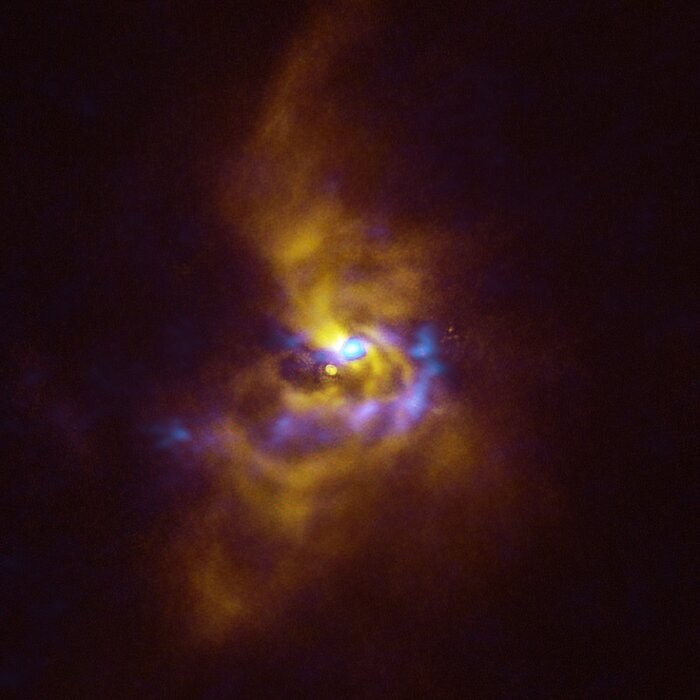A mesmerizing image unveiled by the European Southern Observatory (ESO) has provided a glimpse into the mysterious process of planet formation.
Using the powerful combination of ESO's Very Large Telescope (VLT) and the Atacama Large Millimeter/submillimeter Array (ALMA), researchers have made a significant discovery: the detection of large dusty clumps surrounding a young star, which could potentially give rise to giant planets.

First Detection of Clumps Around a Young Star
Alice Zurlo, a researcher at the Universidad Diego Portales in Chile involved in the observations, expressed excitement about the finding, stating, "This discovery is truly captivating as it marks the very first detection of clumps around a young star that have the potential to give rise to giant planets."
The image was captured with the Spectro-Polarimetric High-contrast Exoplanet REsearch (SPHERE) instrument on ESO's VLT, offering intriguing details of the material surrounding the star known as V960 Mon.
This young star, situated more than 5000 light-years away in the constellation Monoceros, caught astronomers' attention in 2014 when its brightness suddenly increased by over twenty times.
The SPHERE observations made shortly after this brightness surge revealed the presence of material orbiting V960 Mon, arranged in a mesmerizing series of intricate spiral arms that extend over distances greater than the entire Solar System.
The image spurred astronomers to further explore the system through the analysis of archived observations conducted with ALMA, where ESO serves as a partner.
While the VLT observations examined the surface of the dusty material encircling the star, ALMA provided a more detailed glimpse into its internal structure.
The ALMA observations revealed that the spiral arms were experiencing fragmentation, resulting in the emergence of clumps with masses similar to those of planets.
Read Also: ESO's Very Large Telescope Snaps the Haunting Remnants of a Dead Star
Planetary Scales
Philipp Weber, a researcher at the University of Santiago in Chile, who led the study, expressed enthusiasm about this groundbreaking observation of gravitational instability occurring at planetary scales.
"No one had ever seen a real observation of gravitational instability happening at planetary scales - until now," Weber noted.
Sebastián Pérez from the University of Santiago, Chile, a research team member, echoed the excitement, sharing that their group had been devotedly searching for signs of planet formation for more than a decade and was thrilled about this remarkable discovery.
The captivating planetary system under observation will continue to reveal its secrets with the help of ESO instruments. The Extremely Large Telescope (ELT), currently under construction in Chile's Atacama Desert, will play a vital role in unraveling further details of this intriguing process.
The ELT's advanced capabilities will enable astronomers to scrutinize the system with unprecedented detail, providing crucial information about its chemical complexity.
This knowledge will shed light on the composition of the material from which potential planets are forming, bringing scientists closer to understanding the enigmatic birth of planets. The findings about this young star were published in the journal Astrophysical Journal Letters.
Related Article: Astronomers Unveil the Most Detailed Images of Jupiter's Moons Europa and Ganymede









